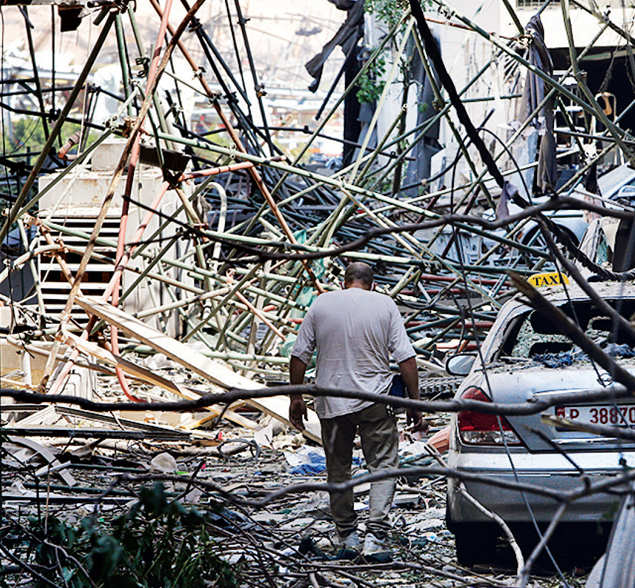It was heard in Cyprus
That’s more than 200km away across the Mediterranean. The blast ripped through buildings in a 10-km radius, blowing out windows and walls and bringing down ceilings. Debris was found miles away and buildings in the vicinity faced severe damage. Cars on the road were flipped by the intensity of the blast.

It set off a seismic wave
The US Geological Survey said the explosion in Beirut created seismic waves equal to a magnitude 3.3 earthquake. But it pointed out that the event was not exactly comparable to an earthquake since it was a surface blast andthe energy produced is dispersed in the air and buildings.
There was a mushroom cloud
It is the hallmark of a nuclear blast but experts said a mushroom cloud doesn’t mean any blast is a nuclear one. Experts say any big blast will form a mushroom cloud. A big blast releases hot gas that quickly rises, but the colder air above tries to push down this sudden surge of gas, “forming the distinctive cap” of a mushroom cloud.
What may have triggered the explosion
Ammonium nitrate is a chemical compound most widely used as fertiliser. It’s not explosive until it’s mixed with fuel and detonated.
Ammonium nitrate is often used in mining or construction as an explosive. When exposed to fuel and heated, it breaks down into nitrogen, oxygen and water vapour, in a process that releases a lot of energy. However, it can be hazardous if not stored properly, and has caused industrial disasters.
Images and video footage appear to show smoke rising from Beirut port before the explosion. Experts say the smoke could have come from a fire that eventually set off the ammonium nitrate explosion.
The Tianjin port blast in August 2015 that killed 173 people resulted from an explosion of ammonium nitrate. Two tonnes of the chemical
was used in the Oklahoma City bombing in 1995 that killed 169 people.
How red tape led to tragedy
According to reports, the Beirut blast was an avoidable tragedy. Officials were repeatedly alerted about the presence of the dangerous stock of ammonium nitrate but they took no action.
In September 2013 , Cargo ship Rhosus carrying 2,750 tonnes of ammonium nitrate from Georgia to Mozambique docks in Beirut after developing technical problems. Crew abandons the ship after Lebanese officials prevent it from sailing out. Ammonium nitrate offloaded and placed in Hangar 12.
Officials flagged dangerous cargo in June 2014. Recommend exporting it, handing it over to the army or a private explosives company. Five more letters sent over the next three years — the latest one in October 2017 — but no action taken.







More News
7. Is it time to reopen schools?
Family loyalists slam dissenters, say timing of letter ‘insensitive’ | India News – Times of India
Filipina beauty queen distributes homemade desserts to support her family – BeautyPageants